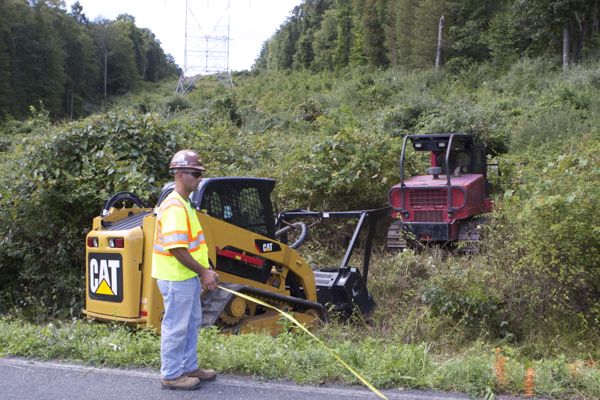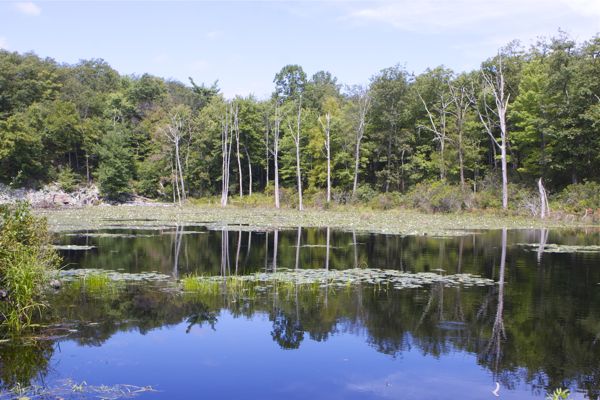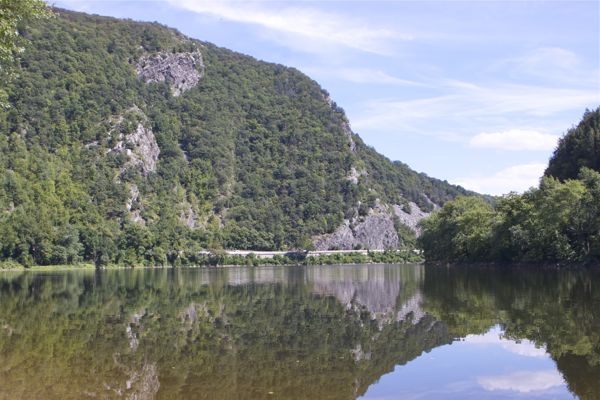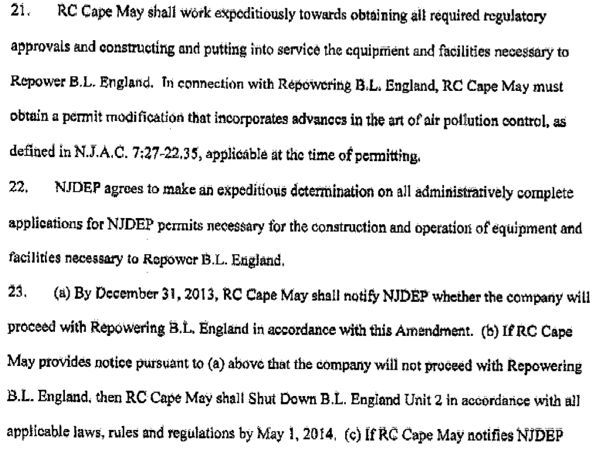Sustainable Shills – Killing Us Softly
Sustainable NJ Receives Almost $2 Million From BPU, Wal-Mart, and South Jersey Gas
A shill is a person who publicly helps a person or organization without disclosing that they have a close relationship with the person or organization.
“Shill” typically refers to someone who purposely gives onlookers the impression that they are an enthusiastic independent customer of a seller (or marketer of ideas) for whom they are secretly working. The person or group who hires the shill is using crowd psychology to encourage other onlookers or audience members to purchase the goods or services (or accept the ideas being marketed). Shills are often employed by professional marketing campaigns.
[Update below]
Bear with me here as I connect a few what may appear to be unrelated dots. (you may want to read this superb Naomi Klein interview for context. Tim DeChristopher made similar points in his recent Bill Moyers interview [and also this interview]. The best point is the last, so read on!
Wal-Mart is perhaps the epitome of an unsustainable global corporate enterprise that destroys local downtown merchants and economies, exploits labor, and destroys the environment. (See: Greenwashing the WalMart Way:
What does this actually mean? First, it’s a part of ongoing efforts by corporate actors like Wal-Mart to brand “sustainability” as a corporate-friendly term synonymous with productivity, efficiency and maximization. Sustainable means, in other words, whatever Wal-Mart says it means.
So why is a group called “Sustainable NJ” laundering $380,000 of Wal-Mart money, providing the corporation huge green cover and dirt cheap advertising and promotion?
Strike One.
The South Jersey Gas Co. recently has come under huge public criticism for their extremely controversial proposal to build a $100 million 22 mile long gas pipeline through the Pinelands National Reserve – in undisputed clear violation of the Comprehensive Management Plan – to deliver fracked gas to repower a decrepit 50 year old power plant (at a cost of another $400 million), whose cooling water intakes will continue to slaughter billions of aquatic organisms in Great Egg Bay while its power plant stacks pump tons of carbon and other pollutants into the air.
South Jersey Gas is the epitome of an unsustainable corporation. And the public outrage over their pipeline/repower project has put them in a very bad light – they are desperate for a little cover.
So, right on time, coming to their rescue, a group named “Sustainable NJ” deploys their “green teams” to promote South Jersey Gas’ “leadership” in an October 28 “Leadership Forum” at Stockton State College. Right on time for the Pinelands Commission approval!
Strike two.
Yesterday I wrote about another example of how “Sustainable NJ (TM)” (SNJ) is an ineffective fraud. Previously on this topic, I wrote:
- Christie Administration Outsources Climate Change Adaptation Planning
- Sustainable Slogans – Untenable Policy
I got mail from readers – although one objected, I got others saying I missed the story and didn’t nearly go far enough in exposing the scam that SNJ perpetrates on the people of NJ! (Wow, that’s something I usually accuse corporate media of!)
So today, we provide additional information to document the massive scale of their shilling in the hopes that we can either shame the organization into mending its ways (extremely unlikely); shame the funders into mending theirs (even more unlikely) or force external inquiries that can creature sufficient public pressure to reform the abuses we’ve become aware of.
My criticisms of SNJ thus far have focused on flaws in the vague concept of sustainability, and how these flaws are exploited by SNJ in a way that misleads and manipulates well meaning and concerned people by channeling them in ineffective directions, all while providing cover for politicians and government policy failures.
Specifically, SNJ provides cover for the fact that the Christie Administration is doing virtually nothing on climate change or adaptation planning and regulation, which are critical State government responsibilities pursuant to the 2007 Global Warming Response Act , the NJ State Air Pollution Control Act (in NJ, greenhouse gases have been regulated as “pollutants” since 2005); the federal Coastal Zone Management Act; the NJ State Coastal Area Facilities Review Act (CAFRA), and the NJ State Flood Hazard Control Act, among other federal and state environmental laws.
But instead of implementing and enforcing these laws, the Christie Administration has either ignored, deregulated, or outsourced those State level planning and regulatory responsibilities, including to private groups like Sustainable NJ.
Sustainable NJ then effectively guts these state programs by making them voluntary local initiatives or market based initiatives.
So, when I wrote that SNJ and BPU were “literally the same” – I meant it – SNJ is BPU’s well funded agent.
Which takes us to our third and final point:
Sustainable NJ not only provides cover for the Christie Administration – they withhold criticism, including: 1) the abdication of State responsibility under various environmental laws; 2) Governor Christie’s neglect, gutting and rollback of climate change programs; and 3) Governor Christie’s theft of $1 BILLION in Clean Energy Funds designed to promote many of the objectives SNJ says they support.
And now, here’s strike three: they do all that while accepting $1,439,850 from the [Christie diverted] Clean Energy Fund! Yup, SNJ BENEFITS from what HARMS almost everyone else!
So of course they are not going to criticize the Gov. theft – they benefit from it!
According to BPU, Sustainable NJ accounts for 78% of NJ’s Energy Efficiency Program (Source: see table in Appendix A of the BPU EE Compliance filing).
To give you a sense of the scope and magnitude of the harm caused by SNJ shilling, we need to consider how energy efficiency and sustainable energy expertise could be applied under NJ’s laws and programs.
For an example of that, here’s what an independent energy expert – who represents the same local governments that SNJ says it does – recently testified on the NJ energy planning program; the BPU regulatory policy regarding energy efficiency and the performance of NJ’s energy efficient programs (an analysis and findings you will never hear from SNJ) :
- However, these reports are outdated. PJM’s 2007 Load Forecasting Report uses 2006 data for projecting consumer demand in 2011 and beyond. Not only does this data fail to consider reduced consumption due to the current recession, it does not consider substantial efforts by the BPU and others since 2006 to reduce consumer demand through increased efficiency, improved time-of-use metering and expanded demand response. PJM also does not factor in the probability of mandated efficiency standards and conservation efforts.
- I will demonstrate that, even if there is a proposed need for electricity, energy efficiency and demand side management, along with the deployment of distributed generation, offer much better alternatives than the Susquehanna-Roseland project.
- PJM assumed that only the amount of load management available in 2007 would be available in future years.16 This assumption was made despite public policy mandates of load management, conservation and efficiency.
- Many studies have found that demand side management is the cheapest way to respond to increases in demand for electricity when compared with building new sources of electricity supply or associated infrastructure such as transmission lines to access generation. Increasing energy efficiency, one study concluded, “is generally the largest, least expensive, most benign, most quickly deployable, least visible, least understood, and most neglected way to provide energy services.”26 Or, as Jon Wellinghoff, the Commissioner of the FERC, put it, “the potential benefits from the incorporation of demand response into wholesale markets indicate that a considerable margin of gain is possible from accelerating such activity.”27
- Currently, PSEG admits that the cost of transmitting and distributing electricity in New Jersey is about one-third the average residential customer’s electricity bill of 16 cents/kWh28, meaning that transmission and distribution costs roughly 5.3 cents/kWh and generation 10. 4 cents/kWh. Demand side management programs, by contrast, displace the need for generation and transmission infrastructure at a small fraction of this cost. The International Energy Agency reviewed forty large-scale commercial DSM programs found that they saved electricity at an average cost of 2.1 to 3.0 ¢/kWh.29 Similarly, the Institute of Electrical and Electronic Engineers found an average cost of 2.6 ¢/kWh for demand-side management, load management, and energy efficiency programs in Vermont.30 Another 2009 study found that the total cost for DSM programs ranged from 2.6 to 4.0 cents per kWh.
- New Jersey has an immense amount of untapped energy efficiency potential. One study from the American Council for an Energy-Efficient Economy noted that cost effective investments in energy efficiency in New Jersey, New York, and Pennsylvania could reduce electricity use by 33 percent in aggregate.33 Another assessment from the Center for Energy, Economic and Environmental Policy at the Bloustein School of Public Policy and Planning at Rutgers University evaluated New Jersey’s Reduced Energy Demand Options Program and found that virtually no customers had yet taken advantage of it, implying that significant savings could still be reached through promotion and participation.34 The Northeast Energy Efficiency Partnership went even further and noted in 2009 that New Jersey could cost effectively save 19,000 GWh per year, including 5,700 MW of peak demand, through energy efficiency and demand side management programs.35 The study calculated that such programs could collectively realize $16.8 billion in net savings by 2020. PSEG has captured only a small fraction of this potential. According to Response to Municipal Interveners Request Munis-General-7/8, PSEG spent a total of $134 million on energy efficiency and demand side management in 2007 to save 733,352 MWh, and $142 million in 2008 to save 672,016 MWh. PSEG operates a power portfolio of 13,576 MW, capable of providing 107,033,184 MWh of electricity per year at a 90 percent capacity factor.36 This means PSEG’s energy efficiency offset only 0.6 percent of potential electricity generation in 2008. A recent 2009 assessment found that of the 75 largest utilities that offered energy efficiency programs in 2007, PSEG did not even make the list of the top 50.37 PSE&G should market, promote, solicit, recruit and institute basic energy efficiency programs.
These are the kind of hard hitting facts and expert recommendations, made in a regulatory proceeding, that can change results and policies.
The BPU simply does not want to hear these kind of facts and criticism presented in a regulatory proceeding where they could be implemented and make a real change. Real change would be vehemently opposed by powerful corporate interests, including PSEG.
They want to keep the public, local officials, and environmental advocates in the dark about all this and protect PSEG from exactly these kinds of criticisms.
That’s why they pay off ineffective shills like SNJ.
Here’s BPU Office of Clean Energy Report (November 14, 2012):
Sustainable Jersey
The 2012-2013 budget for Sustainable Jersey will carry forward any unspent funds from the 2011 budget and also includes funding for new services to be provided in 2012 and the first six months of 2013. Services to be provided in 2013 are described in Attachment A. […]
Those with the stomach for it can go hit the link and read Appendix A for a summary of SNJ “programs”.
I can assure you, you will read NOTHING like the above – I can also assure you that SNJ’s work is having virtually no impact on regulatory policy, investment in energy infrastructure, or the environmental performance of our energy systems.
Strike Three, you’re out.
You can’t even make this stuff up – not even in Chinatown.
[Update: 9/10/13 – additional points of clarification:
1. For the local issues, the same arguments can be made but were left out of this piece.
Local issues can be addressed within the framework of the MLUL Master Plan and local zoning ordinances, which provide enforceable requirements for land use, infrastructure, transportation, open space, recycling, water, energy, building codes, etc.
The SNJ certification and scorecard process diverts from those real requirements by setting up a parallel system that is all voluntary feel good measures that will not change actual on the ground conditions.
[just take a look at DEP promo – it is almost a parody. Note that the local Sustainability Plan has no legal basis, no regulatory authority, no criteria or standards or methods of measurement and evaluation, no binding effect, no funding mechanisms, and no mechanisms to be implemented or formally linked to enforceable requirements. It is a parallel universe of feel good slogans and voluntary aspirations – put all the nice people in a room and keep them happy chatting about slogans while business as usual transpires.]
Here are a few reforms to that MLUL framework that sustainable local bottom up activists could pursue:
- require climate change vulnerability assessment, GWRA numeric emission reductions, and adaptation planning in Master Plan, zoning, and local codes; [this would take new legislation – no campaign I’m aware of and no bill introduced to do that]
- enable municipal power co-ops and distributed renewables elements of local Hazard Mitigation Plans [this too would take either major change in NJ State Hazard Mitigation Plan and.or new legislation. Nothing happening on those fronts that I’ve seen]
- make recommendations of the Environmental Commission binding on Master Plan and development reviews [would take new legislation, not even being pursued]
There are many more examples I could suggest showing how real, enforceable reforms can be implemented in the current framework – none of which are being pursued by SNJ. (where are the bills? Where are the Christie Admin rules? Where is the Christie budget? – everything is going in the opposite direction while SNJ remains mute]
2. Well meaning people are not only being diverted on the substance –
They are not focused on political organizing, movement building, and accountability efforts that could be effective.
SNJ sucks up resources, funding, and community initiative that could be organized to be effective grass roots advocacy.
The corporations and right wing politicians have funded SNJ for exactly this reason: they dissipate, divert, and neutralize effective political response to public policy problems.
In short, they frustrate democracy –
3. And if you think my headline was over the top and that this is not a life and death matter, please read this. end update.
ps- apologies to Roberta Flack for any unintended allusions – I love that song!















